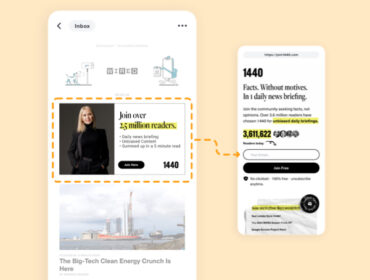How advertisers can prepare for multicultural marketing’s evolution and how publishers can help
Traditionally, multicultural marketing has been a siloed effort from the rest of a company’s overall marketing plan. But in a fast-changing world filled with consumers who expect brands to reflect their values, that approach no longer works.

“Multicultural marketing is the marketing plan,” said LiveIntent Chief Marketing Officer Kerel Cooper during a Brand Innovators livecast with Edward Bourelly, vice president marketing at Planet Fitness.
Their insightful back and forth serves as a wake-up call for brands that are not effectively engaging with today’s diverse consumer market or clearly communicating their brand purpose. “This is a time for change, and it’s keeping people on their toes like never before,” Bourelly said.
The importance of multicultural marketing
Multicultural marketing helps build longer and stronger relationships with audiences. “It’s about the consumer being able to see themselves being a part of a brand,” Bourelly said. “That drives empathy, and it drives connectivity.”
While projecting diversity in ads is still quite important, the two marketers agreed that consumers are seeking a deeper kind of engagement. They want to know what a brand stands for and if it cares about issues they care about.
“One of the trends we’ve seen over the last 15 to 18 months is consumers really investing in brands, buying products that align with their values, with their beliefs, and seeing themselves in an authentic way,” Cooper said. More than ever, consumers can “sniff out” when a brand isn’t being authentic, he said, so it’s imperative for brands to speak from the heart and in a language that is relatable.
Using brand values as a guide
Yet, some companies haven’t established their values, much less embedded them in their decision-making or marketing. “If you’re working for brands that don’t have that yet, stop everything and develop it now,” Bourelly said. “[It’s] not just about what the organization is or is not right now, but what you aspire to.”
On the other hand, brands that have a defined set of values should be open to checking their performance against them, Cooper said. And they should re-evaluate their values each year to determine whether they still make sense for the organization.
Recent events have forced many brands to face that difficult task. “We are in the midst of the biggest civil rights movement since the ’60s,” Bourelly said. “A lot of brands found themselves on the outside of the conversation and asking, ‘How do we deal with this? What are we supposed to do?’ They had to evolve very quickly to not only project themselves in a different way but to restructure how they work and what their teams look like.”
Having diverse leadership and creating an environment that feels inclusive and encourages people to express their perspectives can help marketers avoid mistakes with multicultural marketing, Bourelly said. And that diversity of thought will lead to better marketing and customer experience.
Publishers have a big role to play
So consumers want to do business with brands that share their values—that’s good news for companies with a clear brand purpose. Still, finding these aligned audiences can be challenging.
Buying premium ad inventory in email newsletters is one way to reach the right folks with the right messages at the right time. Some of these newsletters that offer appealing packages of audiences may belong to publishers; others may be from brands that are monetizing their own newsletters.
However, this elegant solution can only happen if publishers can dial into their first-party data to understand who their audiences are, what they care about, and what values matter to them. Publishers can gather this intelligence by studying behavioral data like the newsletter articles subscribers read, the ads they click, the web pages they visit, and the products they put in carts.
As the world moves toward more diversity, equity, and inclusion, multicultural marketing is evolving, and so are consumers. If you’re struggling to effectively reach and engage with diverse audiences, LiveIntent can help.


